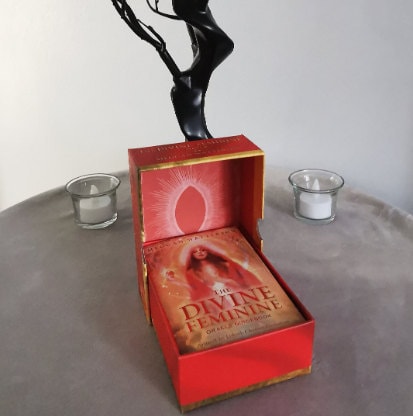Oracle cards are a form of divination tool used for self-reflection, spiritual insight, and guidance. Unlike tarot cards, which follow a specific structure (78 cards divided into Major and Minor Arcana), oracle cards do not have a set number of cards or a standardized system. Each deck is unique, often created around a central theme, such as angels, animals, affirmations, or mythology. Some decks contain as few as 30 cards, while others may have 100 or more, depending on the creator’s intent.
These decks come with a guidebook that provides interpretations for each card, but users are encouraged to rely on their intuition to extract personal meaning. The goal is not necessarily to predict the future but to offer clarity and perspective on various aspects of life.
While tarot cards have a long history dating back to the 15th century and follow specific symbolism and structure, oracle cards are much freer in design and interpretation. Here are some key differences:
Structure – Tarot decks always have 78 cards with predefined meanings, while oracle decks vary in number and themes.
Interpretation – Tarot readings require knowledge of symbolism and traditional meanings, whereas oracle cards are more open-ended and intuitive.
Usage – Tarot is often used for complex readings, while oracle cards can be drawn casually for daily inspiration or simple guidance.
Because of this flexibility, many people find oracle cards easier to use and more approachable than tarot.
Oracle cards can be a powerful tool for personal growth and reflection.
Here are some key benefits:
Oracle cards can help users pause and consider different perspectives on a situation. By drawing a card and contemplating its message, individuals often gain clarity on challenges, relationships, and personal goals.
Taking a few moments to shuffle a deck and draw a card can be a calming ritual. Many people use oracle cards as a form of meditation, allowing themselves to focus on a single message and clear their minds from daily stress.
Unlike tarot, which includes both positive and negative cards, many oracle decks are designed with uplifting messages. This makes them great tools for encouragement, providing users with affirmations and inspiration to navigate difficult times.
Oracle cards encourage users to trust their intuition. Since the meanings are not rigid, individuals are invited to interpret the cards in ways that resonate with them, strengthening their inner wisdom.
Anyone can use oracle cards, regardless of experience.
Here are some simple steps to get started:
There are countless oracle decks available, each with a unique theme and artistic style. When choosing a deck, pick one that speaks to you visually and emotionally. If you feel a connection to the imagery and messages, you’ll find it easier to use and interpret the cards.
Before drawing a card, take a deep breath and set an intention. This could be a question like, “What do I need to focus on today?” or a general request for guidance.
Shuffle the deck in a way that feels right to you, then draw a card at random. Take a moment to observe the artwork, words, and any immediate thoughts or feelings that arise.
Use the guidebook if needed, but also trust your intuition. What does the card’s imagery or meaning bring to mind? How does it relate to your current situation?
Take a few minutes to journal or think about how the card’s message applies to your life. Some people like to place the card in a visible spot throughout the day as a reminder.
Like any spiritual practice, oracle cards are sometimes misunderstood.
Here are some common misconceptions:
They Predict the Future – Oracle cards do not predict the future but rather offer insights and perspectives to help guide decisions.
You Need to Be Psychic to Use Them – Anyone can use oracle cards; they rely more on intuition than psychic abilities.
They Are Religious or Occult – While some decks incorporate spiritual themes, oracle cards are not inherently religious and can be used by anyone, regardless of beliefs.


